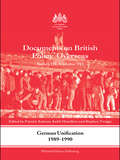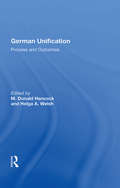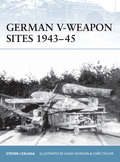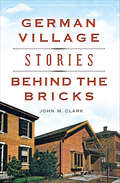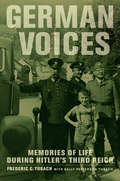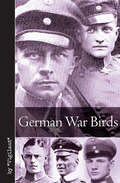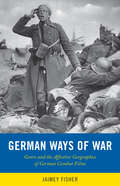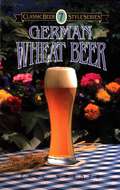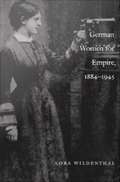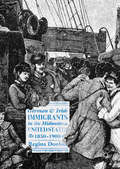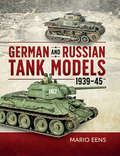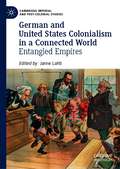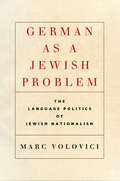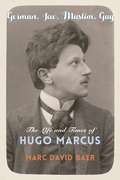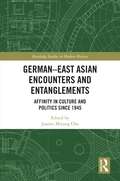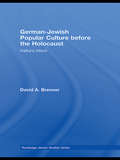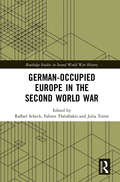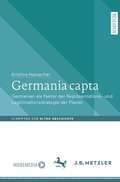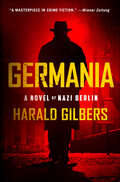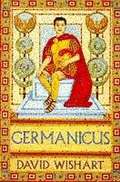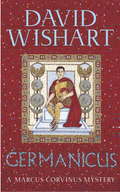- Table View
- List View
German Unification 1989-90: Documents on British Policy Overseas, Series III, Volume VII (Whitehall Histories)
by P. SalmonThis volume is comprised of a collection of diplomatic documents covering British reactions to, and policy towards, the collapse of the German Democratic Republic and the unification of Germany in 1989-90. The peaceful unification of Germany in 1989-90 brought a dramatic end to the Cold War. This volume documents official British reactions to the collapse of East Germany and the fall of the Berlin Wall, and the evolution of British policy during the ‘Two plus Four’ negotiations that provided the international framework for the merger of the two German states. All of the documents fall within the UK’s 30-year rule and have therefore not previously been in the public domain. Most are drawn from the archives of the Foreign and Commonwealth Office, but there are also a large number of Prime Ministerial files from the Cabinet Office archives. These are of particular interest for the light they throw on the views of Margaret Thatcher. Taken together, the documents show that despite Mrs Thatcher’s well-known reservations about German unity, the United Kingdom played a vital and constructive role in the negotiations that helped to bring it about. This volume will be of great interest to students of International History, British Political History, and European Politics and International Relations in general. Patrick Salmon is Chief Historian at the Foreign and Commonwealth Office. Keith Hamilton is a Historian at the Foreign and Commonwealth Office and Senior Editor of Documents on British Policy Overseas. Stephen Twigge is a Senior Historian at the Foreign and Commonwealth Office.
German Unification: Economic Issues
by Leslie Lipschitz Donogh McdonaldA report from the International Monetary Fund.
German Unification: Process And Outcomes
by M. Donald HancockThe East European revolutions of 1989 led to momentous changes throughout the region. Nowhere were they felt more dramatically than in Germany, where unification unexpectedly became reality, unfolding with breathtaking speed, unhindered by major obstacles. However, joy over the fall of the Berlin Wall and the opening of the borders was soon dampene
German V-Weapon Sites 1943-45
by Hugh Johnson Steven ZalogaDesigned to change the course of the war, the V-weapons required ambitious plans to defend their expensive and complicated launch sites. Steven J Zaloga describes the configuration and planned deployment of heavy missile sites, as well as the unique Allied tactics developed to counter this threat, including a remote-control version of the B-17 bomber. Covering the V-1 ski sites, the mobile units employed for V-2 launches and other secret weapons bases like the "V-3" high-pressure gun at Mimoyeques, he reviews the impact of these weapon systems and defenses not only on World War II but also on the development of modern weaponry. This book is an excellent guide to the sites described, many of which still survive and are visited on battlefield tours.
German Village Stories Behind the Bricks (Landmarks)
by John M. ClarkExplore the rich history and mysteries of this Preserve America Community through the eyes of the people who live there! German Village's iconic homes, bustling businesses and other beloved sites harbor fascinating stories. Did you know that German Village's Recreation Park, now gone, is thought to have had the first baseball concession stand? Or that the four-story Schwartz Castle was the site of two murders? Or that the popular restaurant Engine House No. 5 closed its doors after the mysterious disappearance of its owners in the Bermuda Triangle? Longtime resident and tour guide John M. Clark goes behind the bricks of more than seventy German Village properties to explore the places and people who made the Old South End into a Columbus treasure.
German Visions of India, 1871–1918
by Perry MyersThe wide-ranging fascination with India in Wilhelmine Germany emerged during a time of extraordinary cultural and political tensions. This study shows how religious (denominational and spiritual) dilemmas, political agendas, and shifting social consensus became inextricably entangled in the wider German encounter with India during the Kaiserreich.
German Voices: Memories of Life during Hitler's Third Reich
by Sally Patterson Tubach Frederic C. TubachWhat was it like to grow up German during Hitler's Third Reich? In this extraordinary book, Frederic C. Tubach returns to the country of his roots to interview average Germans who, like him, came of age between 1933 and 1945. Tubach sets their recollections and his own memories into a broad historical overview of Nazism--a regime that shaped minds through persuasion (meetings, Nazi Party rallies, the 1936 Olympics, the new mass media of radio and film) and coercion (violence and political suppression). The voices of this long-overlooked population--ordinary people who were neither victims nor perpetrators--reveal the rich complexity of their attitudes and emotions. The book also presents selections from approximately 80,000 unpublished letters (now archived in Berlin) written during the war by civilians and German soldiers. Tubach powerfully provides new insights into Germany's most tragic years, offering a nuanced response to the abiding question of how a nation made the quantum leap from anti-Semitism to systematic genocide.
German War Birds (Vintage Aviation Library)
by Claude W. SykesDramatic true stories of air combat featuring Germany&’s greatest pilots: &“AWorld War I aviation history classic&” (Over the Front). In these riveting accounts, Manfred von Richthofen, Max Immelmann, Oswald Boelcke, and other famous daredevil flyers are joined by lesser-known but equally resourceful colleagues such as Rudolf von Eschwege and Hans Schüz as they take part in furious battles in the sky—and close escapes on the ground when brought down on the wrong side of the lines. German War Birds contains some of the earliest information to appear after the war about air combat in the Middle East and Russia, as well as the Western Front, and about the significance of observation balloons as targets that were viciously attacked. The author focuses on the heart of the action and recreates the experiences of the airborne war with immediacy and excitement—drawing the reader into events as they happen.
German Ways of War: The Affective Geographies and Generic Transformations of German War Films (War Culture)
by Jaimey FisherGerman Ways of War deploys theories of space, mobility, and affect to investigate how war films realize their political projects. Analyzing films across the decades, from the 1910s to 2000s, German Ways of War addresses an important lacuna in media studies: while scholars have tended to focus on the similarities between cinematic looking and weaponized targeting -- between shooting a camera and discharging a gun – this book argues that war films negotiate spaces throughout that frame their violence in ways more revealing than their battle scenes. Beyond that well-known intersection of visuality and violence, German Ways of War explores how the genre frames violence within spatio-affective operations. The production of novel spaces and evocation of new affects transform war films, including the genre’s manipulation of mobility, landscape, territory, scales, and topological networks. Such effects amount to what author Jaimey Fisher terms the films’ “affective geographies” that interweave narrative-generated affects, spatial depictions, and political processes.
German Wheat Beer (Classic Beer Style Series)
by Eric WarnerThis is a thoroughly researched book that teaches history, techniques of brewing and recipe profiles of original wheat beers. It explores this German beer style and has everything a brewer needs to brew wheat beer at home or in a professional brewery. The Classic Beer Style Series from Brewers Publications examines individual world-class beer styles, covering origins, history, sensory profiles, brewing techniques and commercial examples.
German Women for Empire, 1884-1945
by Lora WildenthalWhen Germany annexed colonies in Africa and the Pacific beginning in the 1880s, many German women were enthusiastic. At the same time, however, they found themselves excluded from what they saw as a great nationalistic endeavor. In German Women for Empire, 1884-1945 Lora Wildenthal untangles the varied strands of racism, feminism, and nationalism that thread through German women's efforts to participate in this episode of overseas colonization. In confrontation and sometimes cooperation with men over their place in the colonial project, German women launched nationalist and colonialist campaigns for increased settlement and new state policies. Wildenthal analyzes recently accessible Colonial Office archives as well as mission society records, periodicals, women's memoirs, and fiction to show how these women created niches for themselves in the colonies. They emphasized their unique importance for white racial "purity" and the inculcation of German culture in the family. While pressing for career opportunities for themselves, these women also campaigned against interracial marriage and circulated an image of African and Pacific women as sexually promiscuous and inferior. As Wildenthal discusses, the German colonial imaginary persisted even after the German colonial empire was no longer a reality. The women's colonial movement continued into the Nazi era, combining with other movements to help turn the racialist thought of the late-nineteenth and early-twentieth centuries into the hierarchical evaluation of German citizens as well as colonial subjects. Students and scholars of women's history, modern German history, colonial politics and culture, postcolonial theory, race/ethnicity, and gender will welcome this groundbreaking study.
German and Irish Immigrants in the Midwestern United States, 1850–1900
by Regina DonlonIn the second half of the nineteenth century, hundreds of thousands of German and Irish immigrants left Europe for the United States. Many settled in the Northeast, but some boarded trains and made their way west. Focusing on the cities of Fort Wayne, Indiana and St Louis, Missouri, Regina Donlon employs comparative and transnational methodologies in order to trace their journeys from arrival through their emergence as cultural, social and political forces in their communities. Drawing comparisons between large, industrial St Louis and small, established Fort Wayne and between the different communities which took root there, Donlon offers new insights into the factors which shaped their experiences—including the impact of city size on the preservation of ethnic identity, the contrasting concerns of the German and Irish Catholic churches and the roles of women as social innovators. This unique multi-ethnic approach illuminates overlooked dimensions of the immigrant experience in the American Midwest.
German and Russian Tank Models, 1939–45
by Mario EensThis fully illustrated guide offers step-by-step instructions for building detailed models of German and Russian WWII tanks. This comprehensive guide is invaluable for tank modelers of all skill levels. It includes tips and techniques for building models scaled at 1/72, 1/48 and 1/35. Expert modeler Mario Eens also provides a wealth of information on the tools, paints and techniques needed to give your models an accurate and realistic finish. With this guide at your side, you&’ll be able to recreate the Russian T-34 at the time of the battle of Kursk, and the Su-152 in winter camouflage, as well as the German Panzer I in North Africa, and the gigantic Maus, as it might have appeared just after the war ended.
German and United States Colonialism in a Connected World: Entangled Empires (Cambridge Imperial and Post-Colonial Studies)
by Janne LahtiThis book contributes to global history by examining the connected histories of German and United States colonial empires from the early nineteenth century to the Nazi era. It looks at multiple and multidirectional flows, transfers, and circulations of ideas, people, and practices as Germany and the US were embedded in, and created by, an interconnected world of empires. This relationship was not exceptional, but emblematic of the diverse entanglements that created colonial globality.Colonial entanglements between Germany and the United States took on many forms, but these shared and intersecting histories have been underanalyzed. Traditionally, Germany and the United States have been understood to have taken, respectively, an authoritarian and liberal path into modernity. But there is no neat dichotomy, as the contributors to this book illustrate. There are many more similarities than have previously been appreciated – and they are the result of multilayered entanglements made visible via conquest, settler societies, racialization, and rule of difference. Building on present historiographies of empires, colonialism, and globalization, this book introduces new analytical possibilities for examining these two relatively understudied empires alongside each other, as well as at their intersections.Chapter 1 is available open access under a Creative Commons Attribution 4.0 International License via link.springer.com.
German as a Jewish Problem: The Language Politics of Jewish Nationalism (Stanford Studies in Jewish History and Culture)
by Marc VoloviciThe German language holds an ambivalent and controversial place in the modern history of European Jews, representing different—often conflicting—historical currents. It was the language of the German classics, of German Jewish writers and scientists, of Central European Jewish culture, and of Herzl and the Zionist movement. But it was also the language of Hitler, Goebbels, and the German guards in Nazi concentration camps. The crucial role of German in the formation of Jewish national culture and politics in the late nineteenth century has been largely overshadowed by the catastrophic events that befell Jews under Nazi rule. German as a Jewish Problem tells the Jewish history of the German language, focusing on Jewish national movements in Central and Eastern Europe and Palestine/Israel. Marc Volovici considers key writers and activists whose work reflected the multilingual nature of the Jewish national sphere and the centrality of the German language within it, and argues that it is impossible to understand the histories of modern Hebrew and Yiddish without situating them in relation to German. This book offers a new understanding of the language problem in modern Jewish history, turning to German to illuminate the questions and dilemmas that largely defined the experience of European Jews in the age of nationalism.
German, Jew, Muslim, Gay: The Life and Times of Hugo Marcus (Religion, Culture, and Public Life)
by Marc David BaerHugo Marcus (1880–1966) was a man of many names and many identities. Born a German Jew, he converted to Islam and took the name Hamid, becoming one of the most prominent Muslims in Germany prior to World War II. He was renamed Israel by the Nazis and sent to the Sachsenhausen concentration camp before escaping to Switzerland. He was a gay man who never called himself gay but fought for homosexual rights and wrote queer fiction under the pen name Hans Alienus during his decades of exile.In German, Jew, Muslim, Gay, Marc David Baer uses Marcus’s life and work to shed new light on a striking range of subjects, including German Jewish history and anti-Semitism, Islam in Europe, Muslim-Jewish relations, and the history of the gay rights struggle. Baer explores how Marcus created a unique synthesis of German, gay, and Muslim identity that positioned Johann Wolfgang von Goethe as an intellectual and spiritual model. Marcus’s life offers a new perspective on sexuality and on competing conceptions of gay identity in the multilayered world of interwar and postwar Europe. His unconventional story reveals new aspects of the interconnected histories of Jewish and Muslim individuals and communities, including Muslim responses to Nazism and Muslim experiences of the Holocaust. An intellectual biography of an exceptional yet little-known figure, German, Jew, Muslim, Gay illuminates the complexities of twentieth-century Europe’s religious, sexual, and cultural politics.
German-East Asian Encounters and Entanglements: Affinity in Culture and Politics Since 1945 (Routledge Studies in Modern History #75)
by Joanne Miyang ChoThis volume surveys transnational encounters and entanglements between Germany and East Asia since 1945, a period that has witnessed unprecedented global connections between the two regions. It examines their sociopolitical and cultural connections through a variety of media. Since 1945, cultural flow between Germany and East Asia has increasingly become bidirectional, spurred by East Asian economies’ unprecedented growth. In exploring their dynamic and evolving relations, this volume emphasizes how they have negotiated their differences and have frequently cooperated toward common goals in meeting the challenges of the contemporary world. Given their long-standing historical differences, their post-1945 relations reveal a surprisingly high degree of affinity in many areas. To show how they have deeply shaped each other’s views, this volume presents 12 chapters by scholars from the fields of history, sinology, sociology, literature, music, and film. Topics include cultural topics, such as German and Swiss writers on East Asia (Enzensberg, Muschg, and Kreitz), Japanese writer on Germany (Tezuka and Tawada), German commemorative culture in Korea, Beethoven in China, metal music in Germany and Japan, diary films on Japan (Wenders), as well as sociopolitical topics, such as Sino– East German diplomacy, Germans and Korean democracy, and Japanes and Korean communities in Germany.
German-Jewish Popular Culture before the Holocaust: Kafka's kitsch (Routledge Jewish Studies Series)
by David A. BrennerDavid A. Brenner examines how Jews in Central Europe developed one of the first "ethnic" or "minority" cultures in modernity. Not exclusively "German" or "Jewish," the experiences of German-speaking Jewry in the decades prior to the Third Reich and the Holocaust were also negotiated in encounters with popular culture, particularly the novel, the drama and mass media. Despite recent scholarship, the misconception persists that Jewish Germans were bent on assimilation. Although subject to compulsion, they did not become solely "German," much less "European." Yet their behavior and values were by no means exclusively "Jewish," as the Nazis or other anti-Semites would have it. Rather, the German Jews achieved a peculiar synthesis between 1890 and 1933, developing a culture that was not only "middle-class" but also "ethnic." In particular, they reinvented Judaic traditions by way of a hybridized culture. Based on research in German, Israeli and American archives, German-Jewish Popular Culture before the Holocaust addresses many of the genres in which a specifically German-Jewish identity was performed, from the Yiddish theatre and Zionist humour all the way to sensationalist memoirs and Kafka’s own kitsch. This middle-class ethnic identity encompassed and went beyond religious confession and identity politics. In focusing principally on German-Jewish popular culture, this groundbreaking book introduces the beginnings of "ethnicity" as we know it and live it today.
German-Language Children's and Youth Literature In The Media Network 1900-1945.
by Petra Josting Marlene Antonia Illies Matthias Preis Annemarie WeberWith the research of German-language children's and youth literature and its media associations in the period from 1900 to 1945 as well as the recording of all data in an online portal for research and visual analysis, an innovative contribution to the historiography of children's and youth literature is available. The introduction provides information on the criteria for inclusion, central sources, theoretical frameworks, and the spectrum of the media associations investigated. Part I assembles three overview articles on the media of radio, film and theater for children and young people as well as a contribution on the conception and development of the online portal. In the second part, 18 selected media alliances are presented, sorted into the categories pioneers conquer the new media - stage children migrate to radio and/or film - fairy tales in film and radio - classics in all media - school stories in the theater, book and on the screen - crime and scandal on the screen - political conquers book and film.
German-Speaking Jewish Refugees in Asia, 1930–1950: Shelter from the Storm? (Routledge Studies in Cultural History)
by Joanne Miyang Cho Eric Kurlander Doug McGetchinAlthough most perished, hundreds of thousands of Central European Jews escaped the Holocaust; tens of thousands of these Jewish refugees ended up in East Asia, Southeast Asia, or South Asia. Taking a global and transnational approach, this volume examines the cultural, political, and socioeconomic encounters among and between Asian and European states and empires, Central European Jews, and Asians between 1930 and 1950, offering important case studies that address the policies toward and experiences of German-speaking Jews across East Asia, Southeast Asia, and South Asia.The strength of this volume lies not only in its efforts to include multiple theoretical perspectives, which integrate German, Jewish, Asian, and Migration Studies, but also in the original empirical research on which it is based. Engaging directly with the rich and growing historiography on the origins, course, and consequences of the Holocaust in East, Southeast, and South Asia, this volume provides a framework in which we can better understand how global traditions of empire and colonialism matter in our efforts to understand the Holocaust, while indicating that Asian states and peoples were keenly aware of the so-called “Jewish Question” and made efforts, though widely differentiated, to provide shelter from the Nazi storm.German-Speaking Jewish Refugees in Asia, 1930–1950 will appeal to students and scholars alike interested in the history of Jewish refugees in the twentieth century, as well as all those interested in the modern history of German-speaking Central Europe and Asia.
German-occupied Europe in the Second World War (Routledge Studies in Second World War History)
by Raffael Scheck Fabien Théofilakis Julia TorrieInspired by recent works on Nazi empire, this book provides a framework to guide occupation research with a broad comparative angle focusing on human interactions. Overcoming national compartmentalization, it examines Nazi occupations with attention to relations between occupiers and local populations and differences among occupation regimes. This is a timely book which engages in historical and current conversations on European nationalisms and the rise of right-wing populisms.
Germania capta: Germanien als Faktor der Repräsentations- und Legitimationsstrategie der Flavier (Schriften zur Alten Geschichte)
by Kristina HamacherAus der Betrachtung der Flavier ergibt sich noch immer häufig ein zweigeteiltes Bild: Den ‚guten‘ Kaisern Vespasian und Titus steht der ‚Tyrann‘ Domitian entgegen, der sich zu weit vom augusteischen Ideal entfernt hatte. Vor diesem Hintergrund analysiert die vorliegende Studie die flavischen Repräsentations- und Legitimationsbemühungen im Traditionszusammenhang des frühen Principats. Als Untersuchungsgegenstand dient hierbei Germanien – ein geographischer Raum, in dem sich alle drei flavischen Kaiser sowie nahezu alle männlichen Vertreter des iulisch-claudischen Herrscherhauses zu bewähren hatten. Durch einen interdisziplinären Zugriff auf die uns überlieferten Quellen kann dabei der Blick auf eine gesamtflavische Herrschaftsauffassung eröffnet werden.
Germania: A Novel of Nazi Berlin
by Harald GilbersFrom international bestselling author Harald Gilbers comes the heart-pounding story of Jewish detective Richard Oppenheimer as he hunts for a serial killer through war-torn Nazi Berlin in Germania.Berlin 1944: a serial killer stalks the bombed-out capital of the Reich, preying on women and laying their mutilated bodies in front of war memorials. All of the victims are linked to the Nazi party. But according to one eyewitness account, the perpetrator is not an opponent of Hitler's regime, but rather a loyal Nazi. Jewish detective Richard Oppenheimer, once a successful investigator for the Berlin police, is reactivated by the Gestapo and forced onto the case. Oppenheimer is not just concerned with catching the killer and helping others survive, but also his own survival. Worst of all, solving this case is what will certainly put him in the most jeopardy. With no other choice but to futher his investigation, he feverishly searches for answers, and a way out of this dangerous game.
Germanicus
by David WishartMarcus Valerius Messalla Corvinus, a young Roman patrician, investigates the death of Germanicus, the adopted son of the Emperor Tiberius.
Germanicus
by David WishartMarcus Corvinus feels his heart sink when he is summoned by Empress Livia. Age has not sweetened her and she's about as trustworthy as a snake with a migraine. But Livia has a way of asking a favour that is impossible to refuse - which is how Marcus finds himself investigating the death of her grandson, Germanicus. And uncovering a multi-stranded web of betrayal and deceit that threatens the imperial succession and even Emperor Tiberius himself.
